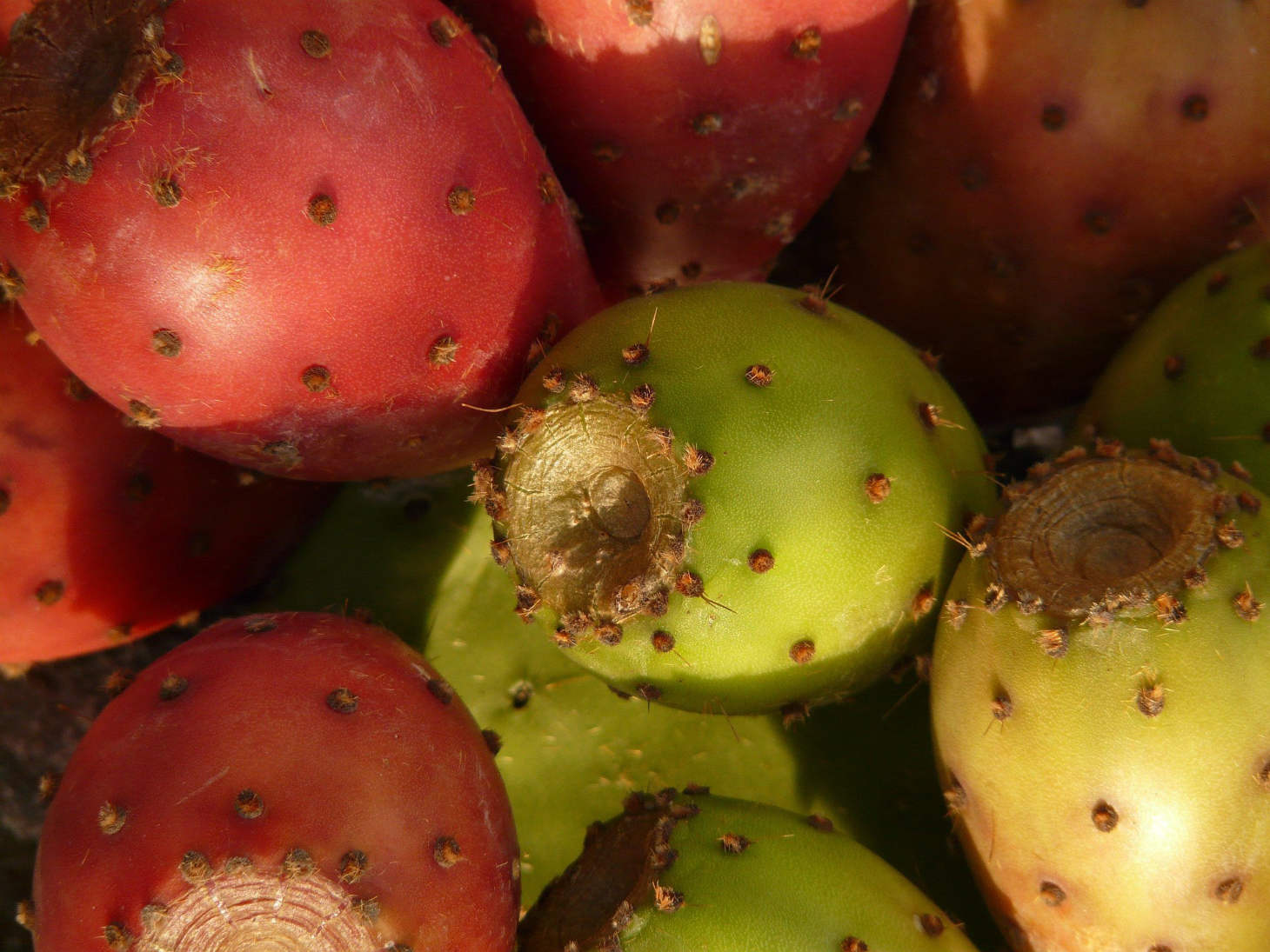Cactus Fruit
Have you ever noticed those colorful bulbs growing on cacti and wondered if they’re edible? Cactus fruits, especially those from the prickly pear (Opuntia), offer a unique sweet flavor that blends watermelon and berry notes. Almost all cactus fruits are safe to eat, making them an accessible wild food source that you can enjoy with proper preparation.
These vibrant fruits, sometimes called “tunas,” grow on paddle-shaped cacti native to the Americas but now found in various regions worldwide. While they look intimidating with their spiny exterior, they transform into a delicious treat once properly handled. You can enjoy both the fruit and the pads (nopales) of many cactus varieties, though the preparation techniques differ.
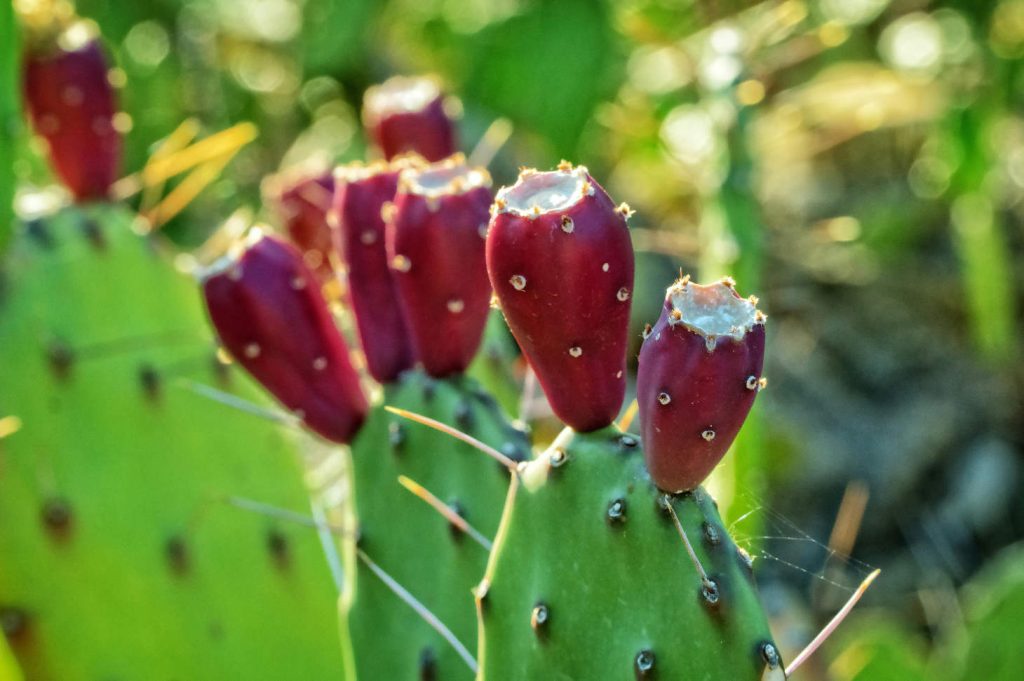
Before taking a bite, you’ll need to remove the tiny hair-like spines called glochids that cover most cactus fruits. The juicy interior that can be eaten fresh, made into juice, or used in various recipes. The unique flavor and versatility of cactus fruit make it worth the extra preparation steps.
Key Takeaways
- Prickly pear and most other cactus fruits are safe to eat and offer a sweet, melon-like flavor with proper handling and preparation.
- Both the fruits (tunas) and pads (nopales) of cacti like Opuntia serve as versatile food sources that can be prepared in multiple ways.
- Cactus fruits require careful removal of glochids (tiny spines) before consumption, but reward you with unique flavors and potential health benefits.
Botanical Profile and Varieties
Cactus fruits come in various shapes, sizes, and colors depending on their species. The most well-known edible cactus fruit comes from the Opuntia genus, commonly called prickly pear.
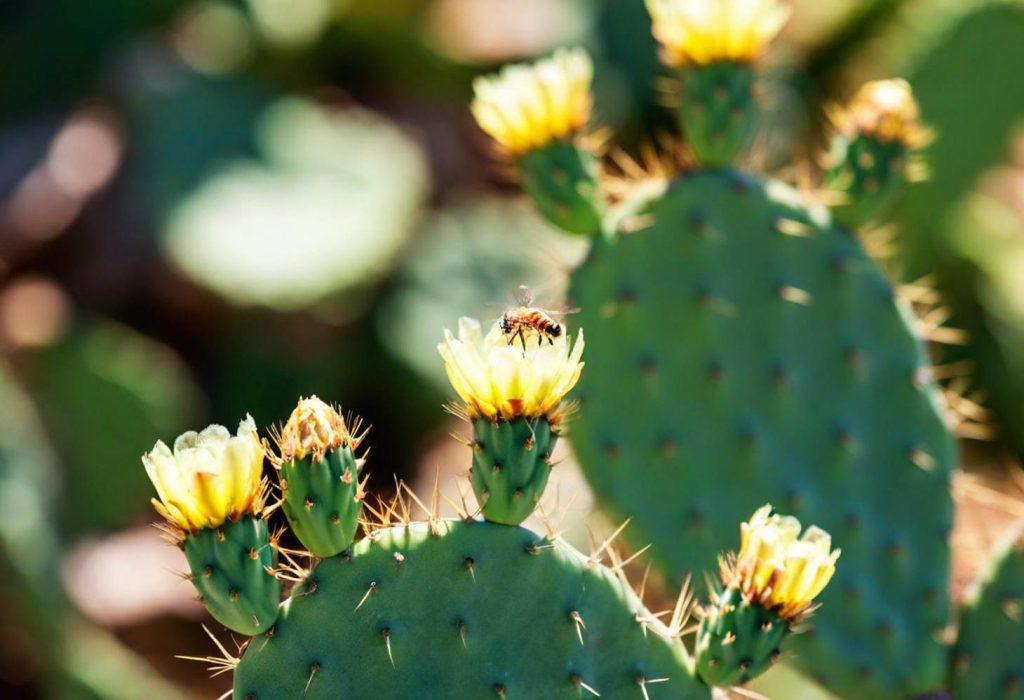
Prickly Pear Cactus Characteristics
Prickly pear cacti (Opuntia) are distinctive succulents with flat, paddle-shaped segments called cladodes or pads. These plants are evergreen and drought-resistant, making them well-adapted to harsh desert conditions.
The most notable features are their defense mechanisms. Large, visible spines grow from areoles (small bumps) on the pads. More dangerous are the tiny, hair-like glochids that detach easily and can embed in your skin.
Prickly pears produce vibrant flowers in yellow, orange, red, or pink. These bloom in spring and develop into the edible fruits. The plants can grow from 1-20 feet tall depending on the species and conditions.
Most varieties can withstand temperatures down to 14°F (-10°C) when established, though some are more cold-hardy than others.
Opuntia Species and Distribution
Opuntia is the largest genus in the cactus family, with about 150-300 different species. These plants are native to the Americas but have spread worldwide.
Common edible varieties include:
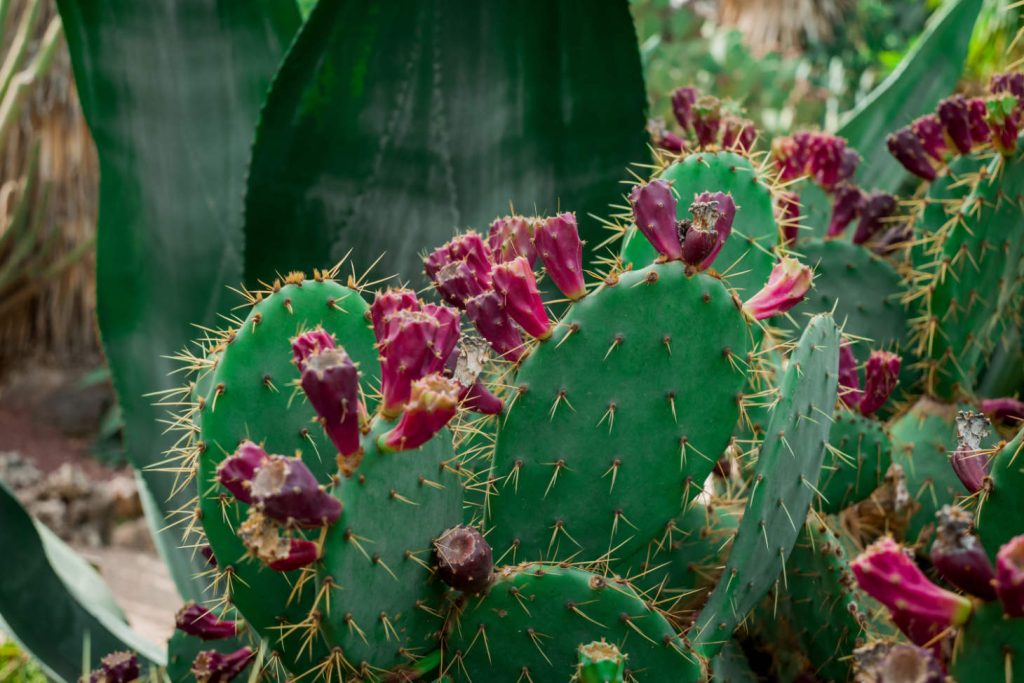
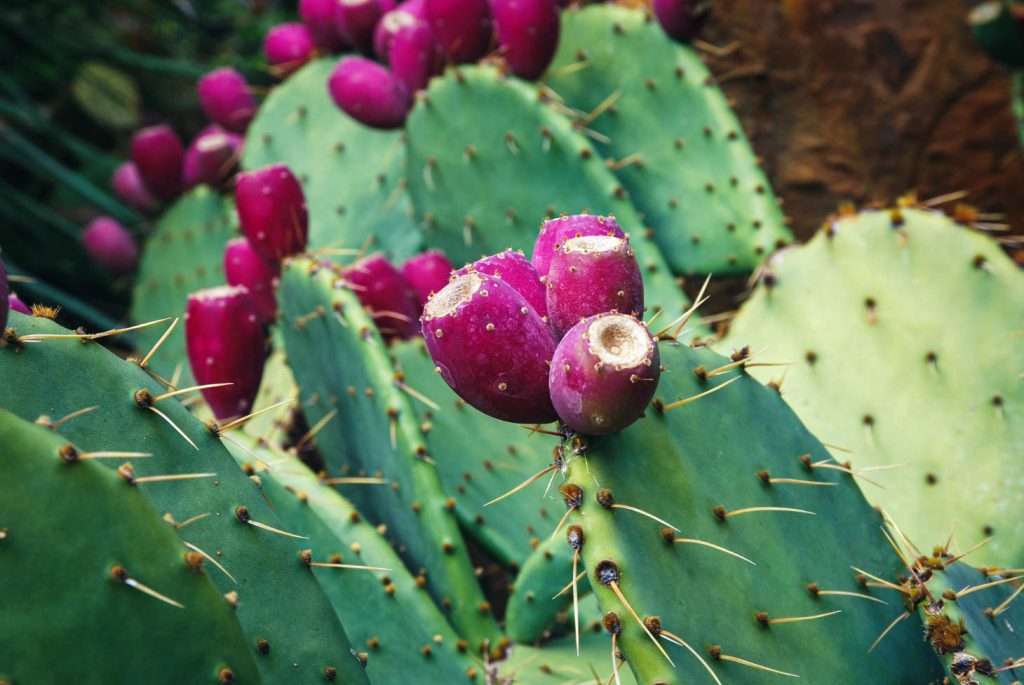
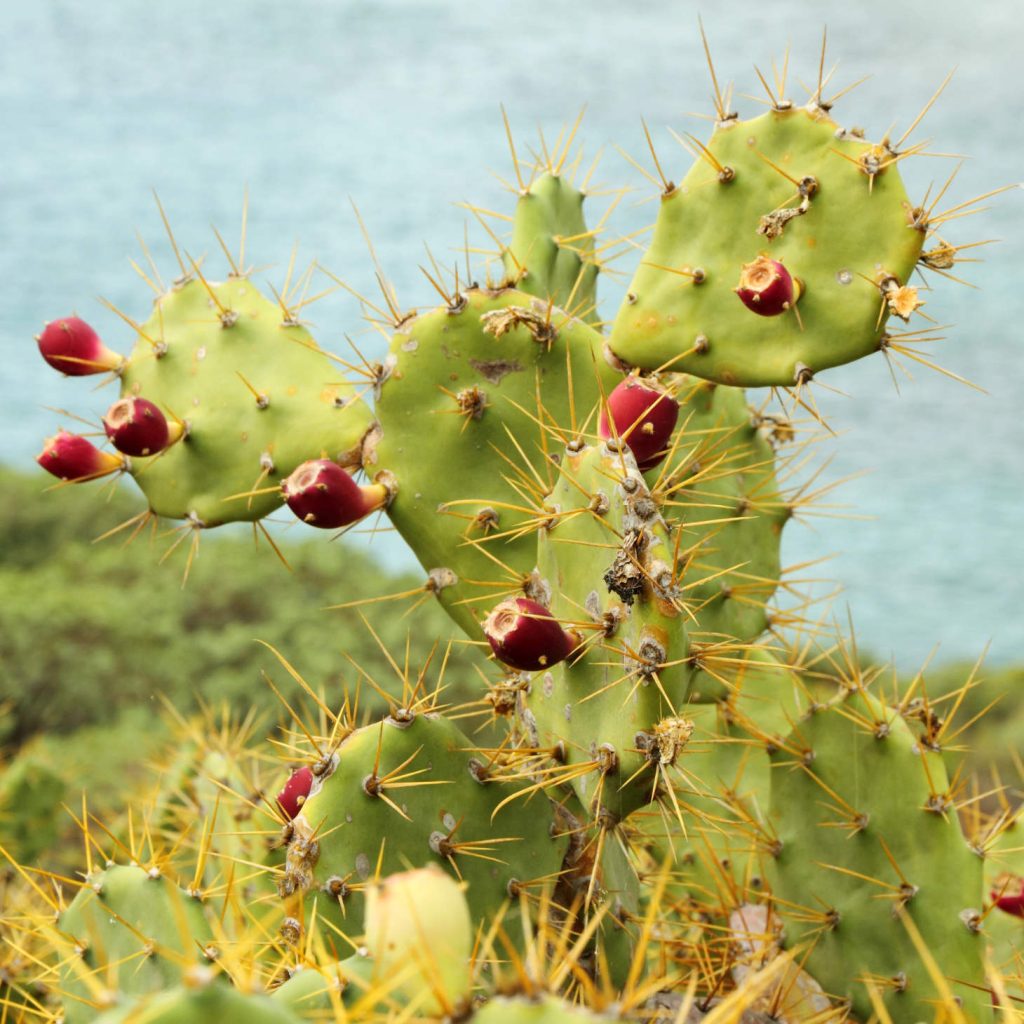
- Opuntia ficus-indica (Indian fig): The most widely cultivated species for fruit production
- Opuntia engelmannii: Native to southwestern US and northern Mexico
- Opuntia stricta: Coastal prickly pear found in Florida and the Caribbean
Prickly pears thrive in the southwestern United States, Mexico, and parts of South America. They’ve been introduced to Mediterranean regions, Australia, and Africa where they sometimes become invasive.
You can find these cacti growing in deserts, grasslands, and rocky areas. They prefer well-drained soil and full sun exposure.
Physical Description of Cactus Fruit
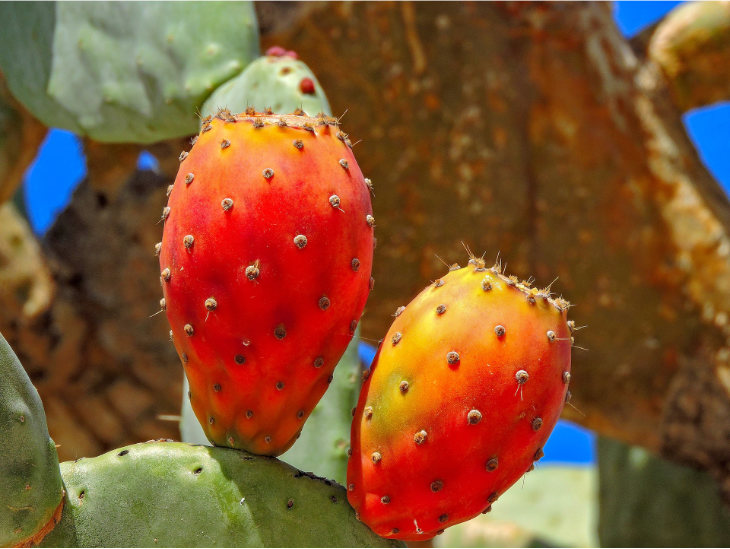
Prickly pear fruits (often called “tunas”) vary in color from green to yellow, orange, red, or purple. They typically grow 1-3 inches long with an oval or pear-like shape.
The outer skin is tough and covered with clusters of tiny glochids. Inside, you’ll find sweet, juicy flesh ranging from pale green to deep magenta. The texture resembles a watermelon with numerous hard seeds distributed throughout.
When ripe, the fruits emit a subtle sweet fragrance. They contain high levels of vitamin C, minerals, and antioxidants. The taste is often described as a mix between watermelon and the tartness of strawberry or raspberry.
Fruits typically ripen in late summer to fall, about 3-4 months after flowering. When selecting fruits, look for those with a deep, uniform color (typically ruby red or magenta for common varieties) and no green remaining. Ripe fruits should also feel plump and detach easily with a slight twist.
Nutritional and Health Benefits
Cactus fruits offer impressive nutritional value and potential health advantages. These colorful fruits are packed with essential nutrients while remaining relatively low in calories.
Vitamins and Minerals Content
Cactus fruits are rich in vitamin C, which supports your immune system and helps your body absorb iron. A single serving provides a significant portion of your daily vitamin C needs.
These fruits also contain important minerals including potassium, magnesium, and calcium. Potassium helps regulate blood pressure and supports proper muscle function. Magnesium contributes to bone health and energy production.
Cactus fruits, particularly prickly pears, contain vitamin B6, copper, and manganese. These nutrients support various bodily functions from nerve health to metabolism.
The vibrant colors of cactus fruits indicate the presence of beneficial plant compounds. These include betalains and polyphenols, which act as powerful antioxidants in your body.
Medicinal Uses and Research

Research suggests cactus fruits may help manage blood sugar levels. The fiber and antioxidants in these fruits might improve insulin sensitivity, making them potentially beneficial for people with diabetes.
Cactus fruit consumption has been linked to improved liver health. The antioxidants help protect liver cells from damage and may reduce inflammation.
The high fiber content of cactus fruits supports digestive health. This dietary fiber helps maintain regular bowel movements and feeds beneficial gut bacteria.
Some studies indicate cactus fruits may aid weight management efforts. Their fiber content helps you feel full longer, potentially reducing overall calorie intake.
Culinary Uses and Preparation
Cactus fruit, particularly prickly pear, offers vibrant flavor and versatility in the kitchen. The fruit can be transformed into delicious foods and drinks with the right preparation techniques.
Removing Spines and Glochids
Before enjoying cactus fruit, you must carefully remove its defensive features.
- Use tongs to hold the fruit while rinsing it under cold water. Alternatively, hold it with a thick towel or wear thick gloves while slicing off both ends.
- To remove glochids, hold the cactus fruit with tongs and singe it over an open flame until the glochids are burned off.
- Make a shallow lengthwise cut through the skin, then peel it away from the pulp. The bright interior flesh is now ready for eating or cooking.
- Always inspect the peeled fruit carefully to ensure all spines have been removed before consumption.
Traditional and Modern Recipes
Prickly pear fruit appears in many cultural dishes. In Mexican cuisine, it’s used in aguas frescas, a refreshing drink made by blending the fruit with water and sugar.
You can make vibrant jellies and jams by cooking the pulp with sugar. The natural pectin in the fruit helps create the perfect consistency. These preserves work wonderfully on toast or paired with cream cheese.
The fruit adds bright color and flavor to salsas when diced and mixed with other ingredients. In desert regions, people dry the fruit for longer preservation.
Modern chefs incorporate prickly pear into syrups for cocktails and desserts. The fruit also appears in vinaigrettes, ice creams, and even barbecue sauces for a unique twist.
Prickly Pear Cooking Techniques
To extract juice from prickly pear, chop the peeled fruit and simmer it in water. Strain the mixture through a fine mesh sieve to separate the juice from the numerous small seeds.
For syrup preparation, combine the strained juice with sugar in a 1:1 ratio. Boil until it reaches your desired thickness. This versatile syrup works in drinks, over pancakes, or drizzled on tropical fruits.
When making jellies, add lemon juice to the fruit pulp before cooking with sugar. The acidity balances the sweetness and helps with setting.
Fresh cactus fruit can be sliced and added to salads for a bright contrast, similar to how you might use mango or pomegranate. The seeds are typically eaten rather than removed.
For a simple dessert, try pureeing the flesh and freezing it into popsicles or sorbet.

